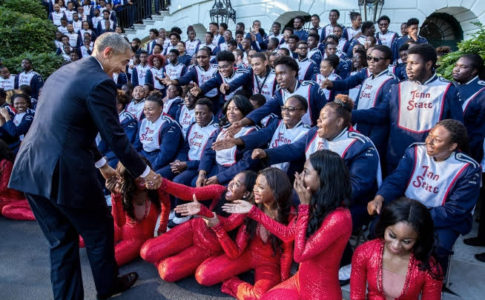Social media has changed the way that performers, instructors, and fans interact throughout the marching seasons and beyond. Sharing via Facebook, Twitter, Instagram, Snapchat, and more have become an integral part of the marching world.
Connecting a Community
Social media has allowed us to build a stronger community of performers and staff with a variety of experiences and expertise. Facebook groups allow people to discuss the history and future of our activity throughout each season and allow staff to sell and buy used equipment. Instagram and Snapchat allow young performers to experience snippets of day-to-day life with a drum corps or winter guard.
Inspiring and Learning
Being able to connect with a favorite corps or guard can be incredibly inspiring for young performers, and social media has made it easier to connect with groups outside of individual circuits or states. This inspiration can play a huge role in motivating young performers to keep training and learning. Instructors can also post choreography and tutorial videos on a variety of platforms for students to access when practicing on their own at home.
Proceeding with Caution
Performers need to understand that not every trick they see online is something they can accomplish right away. Instructors should make sure students fully understand that they shouldn’t just attempt every trick they see online without understanding the fundamentals involved in its execution. Attempting skills without that foundation can cause a variety of injuries—from minor to permanent.
Social media won’t be disappearing anytime soon. As we continue to encourage students to seek inspiration from more experienced performers they’ve connected with, we need to make sure that students understand their own levels and build to more challenging skills correctly.


